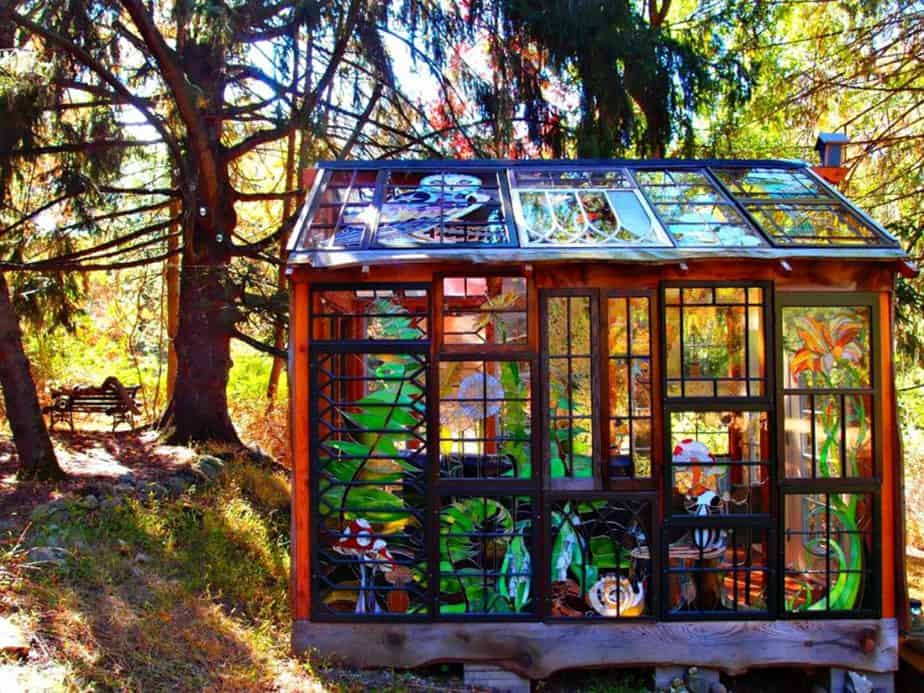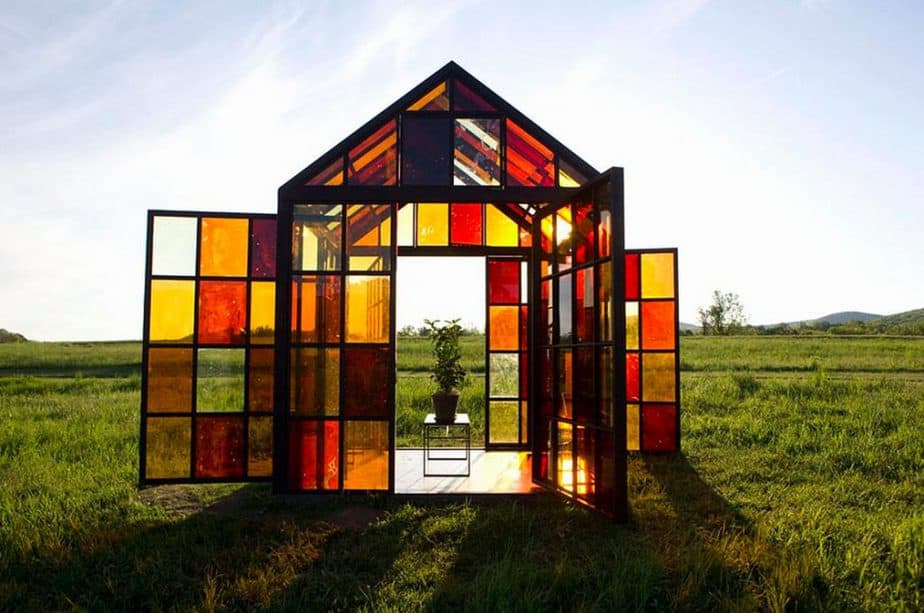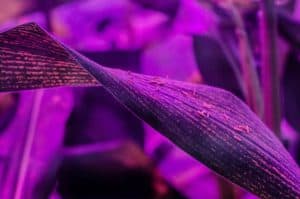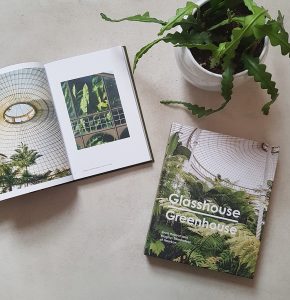Adding a splash of color to your greenhouse design is a wonderful idea that can help you take your aesthetic to the next level.
One of the ways you can add a splash of color to your greenhouse is by using stained glass. It won’t only make for an enticing design, but it’ll also provide some privacy.
Is it practical, though? Can you use stained glass for a greenhouse? Will it affect the flora and fauna within your greenhouse in any negative way?
Read on to find answers to these questions, as well as additional insight on how you can make your very own stained glass.
Can I Use Stained Glass for a Greenhouse?

Using stained glass for a greenhouse has plenty of benefits, from reducing excessive UV rays to boosting the aesthetic appeal of your outdoor area. So, yes, you can definitely use stained glass for your greenhouse. Just keep in mind that stained glass can be expensive, which is why we’re going to teach you how you can stain your own glass.
Advantages of Using Stained Glass for a Greenhouse

Numerous advantages come with using stained glass for a greenhouse. Stained glass will add an aesthetic element to your outdoor scenery and overall decor. Going out to the garden will be a more relaxing experience with your art-covered greenhouse taking center stage.
Aside from the visual advantages of using stained glass for your greenhouse, you can also get practical benefits from their use. The extra layer of color in your stained glass will provide a sheath of privacy from neighbors and onlookers.
Your plants will also thank you for using stained glass in your greenhouse, as the added color will protect them from any excessive UV rays that would penetrate easily through clear glass.
UV protection isn’t the only protection you’d be getting from stained glass. The added layer of color will also provide better encasing for your greenhouse to avoid heavy rainfall, giving it water-resistant capabilities.
Are you certain that you want to build a glass greenhouse? Learn more about different types of greenhouse panes to be sure!
Disadvantages of Using Stained Glass for Greenhouse

There are a couple of downsides to using stained glass for your greenhouse. One, stained glass doesn’t come cheap, which is why we recommend staining your own glass.
Two, the process of staining your glass can be a bit time-consuming. Taking out each individual glass piece to stain it will need some patience.
Apart from the long hours you might spend staining glass, you’ll probably need to spend a good amount of money on colors and tools. It won’t be as costly as buying ready-made stained glass, though.
Nevertheless, you can think of this as an investment. A stained-glass greenhouse will help add more value to your property.
If you plan on selling your place in the future, you might be able to charge a little extra for the work of art you spent your money on or created.
If you don’t already have a greenhouse, then now would be a great time to do a cost benefit analysis to see whether a stained glass greenhouse is best for you. Learn about the costs of greenhouses before considering the costs of staining your glass.
How to Stain Glass
Before we highlight the process of staining glass, we’d like to point out that this process needs quite a bit of time, so you may want to free up a day or two in your schedule.
Ready to start staining glass for your greenhouse? Here are the steps you need to follow:
Step 1: Get Your Tools Ready
First things first, you’re going to need some tools to get you started. Here’s a list of all the tools you need:
- Greenhouse tempered glass
- Glass cutters
- Pliers
- Copper foil
- Soldering iron
- Solder
- Grinder
- Flux
- Lightbox
- Acrylic enamel
- Safety glasses and gloves
Step 2: Get Your Design Ready
Next, you need to choose your art piece. You can draw flowers, colorful patterns, or maybe some cute animals. You don’t need to be talented to bring your vision to life.
You can print out your shape and design into a large piece of graph paper and simply work your dimensions out based on each square on the paper.
Try to be realistic when choosing the design. You might not be able to go with a detailed piece, as it’ll be hard to execute on a glass canvas.
If you’re unsure what to choose, you can look for inspiration on the internet and look at stained glass mosaic art pieces. Pinterest is an excellent place to start.
Step 3: Trace Your Artwork
You can use a lightbox for this step. All you need to do is put your image under the glass and lightly trace over the lines.
You can also use a black sharpie. If the image is a bit complex, you can number each section to track where every piece goes.
If you’re going for a more contemporary approach where you only want to color the glass, you won’t need to follow this step.
Step 4: Cut Your Glass
After you divide your sections with straight lines, prepare your glass cutter and proceed to score your traced lines.
Once you’re ready, you can then use your pliers to cut off each part. The glass will break on the scored lines you’ve created.
If you don’t have pliers, you can use your hands instead to break the glass pieces apart. It might be more challenging to cut if your design has curvy lines.
You can slightly tap your scored line using the glass cutter to create a tiny fracture. It’ll make snapping your glass much easier.
After cutting the glass, you need to grind the edges up. This step is crucial since this will govern how every piece will fit together. Try not to exert too much pressure while grinding so that you don’t break the glass.
Step 5: Piece Everything Together
The cut pieces are now ready to be colored. Let your creativity take over, and add the colors you want using acrylic enamel paint.
Afterward, you’ll need to line your pieces with copper foil and solder them together. Make sure to solder the pieces from both the front and the back.
Step 6: Place the Glass Panels Back
Your masterpiece is complete! All that’s left to do is tip it back to its respective space in your greenhouse. You’ll be left with a stunning piece of art.
Your Stained Glass Greenhouse
Using stained glass for a greenhouse will provide you with an exceptional ambiance. When you light it up at night, it’ll look even more exquisite!
Since staining your glass doesn’t necessarily cause much harm to your plants, you can execute this creative project guilt-free.
By following the steps detailed above, we’re confident you’ll be able to make some unique stained glass patterns and shapes. Good luck!




